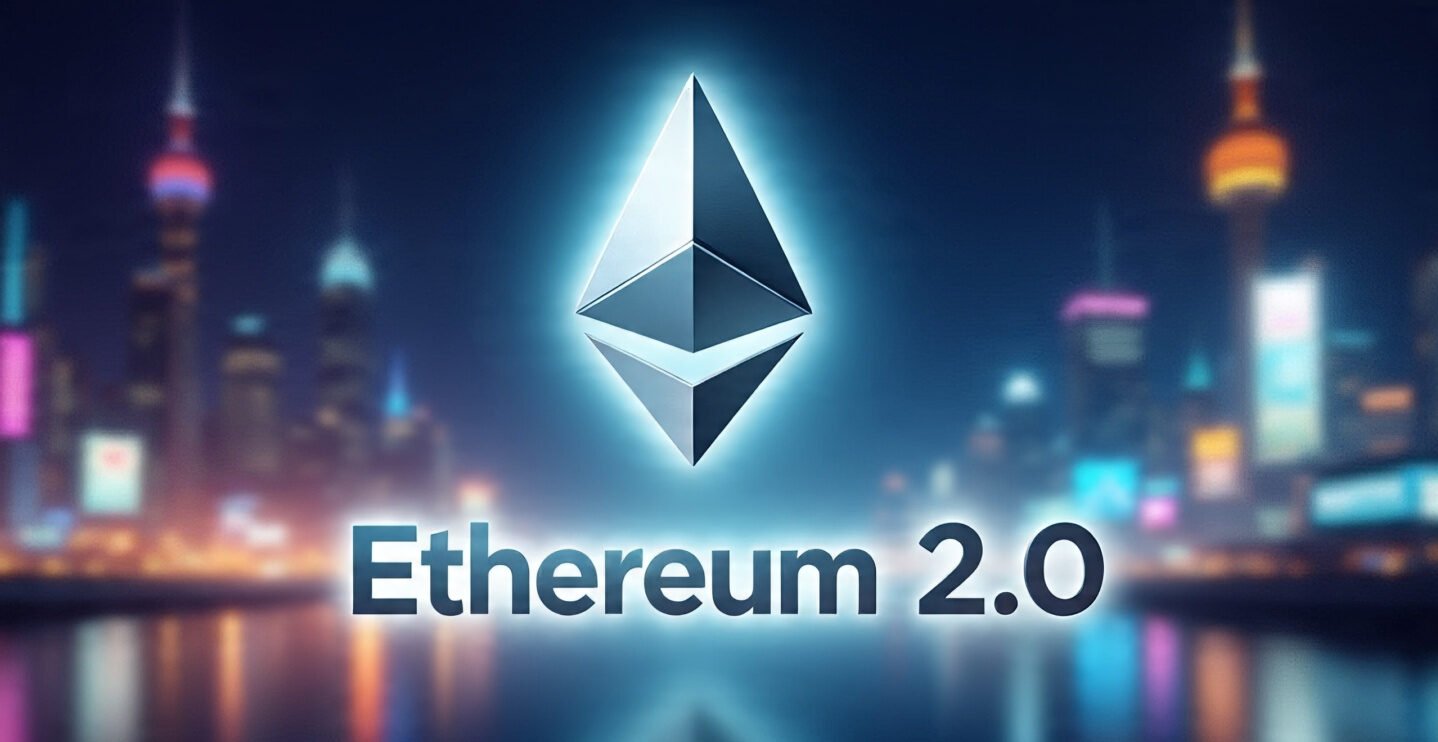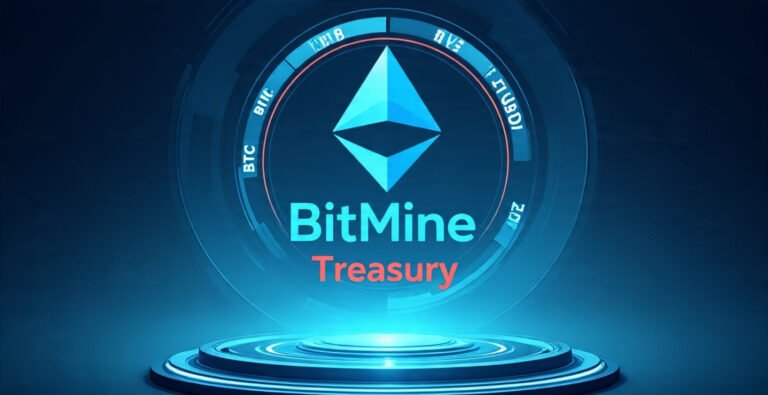In a groundbreaking development that has sent ripples throughout the cryptocurrency ecosystem, BitMine, one of the world’s leading blockchain technology companies, has announced that its Ethereum treasury holdings have reached an unprecedented 2% of the total ETH supply. This milestone represents not just a significant corporate achievement but a paradigm shift in how major technology companies are approaching digital asset management and blockchain investment strategies.
The announcement comes at a time when institutional adoption of Ethereum continues to accelerate, with major corporations increasingly viewing ETH as both a store of value and a strategic asset for future blockchain operations. BitMine’s Ethereum accumulation strategy, which began in early 2022, has transformed the company from a traditional mining operation into one of the largest corporate holders of Ethereum globally.
This substantial treasury allocation raises important questions about market concentration, corporate strategy, and the future of decentralised finance (DeFi). With approximately 120 million ETH currently in circulation, BitMine’s holdings represent roughly 2.4 million Ethereum tokens, valued at over $4 billion at current market prices. This positions the company as a major stakeholder in the Ethereum News network and gives it significant influence over future protocol decisions and governance matters.
The strategic implications extend far beyond simple asset accumulation. BitMine’s Ethereum treasury strategy reflects a broader trend of corporate entities recognising blockchain technology as fundamental infrastructure for the digital economy. By holding substantial ETH reserves, the company has positioned itself at the forefront of the Web3 revolution and smart contract adoption.
BitMine’s Strategic Ethereum Accumulation
The Evolution from Mining to Treasury Management
BitMine’s journey from a conventional cryptocurrency mining company to a major Ethereum holder represents a strategic evolution that many industry observers consider visionary. The company’s leadership recognised early that the transition from proof-of-work to proof-of-stake consensus mechanisms would fundamentally alter the crypto mining landscape.
Rather than simply adapting their mining operations, BitMine made the bold decision to begin accumulating Ethereum directly, treating it as a strategic reserve asset. This approach has proven remarkably prescient, as the company’s ETH holdings have not only preserved capital but also generated substantial returns while positioning BitMine as a key player in the Ethereum ecosystem.
Corporate Treasury Strategy in the Digital Age
The decision to allocate such a significant portion of corporate treasury to Ethereum reflects a fundamental shift in how technology companies view digital assets. Traditional corporate treasury management focused primarily on cash equivalents and short-term investments. However, BitMine’s Ethereum strategy demonstrates how forward-thinking companies are embracing cryptocurrency as a hedge against inflation and a bet on the future of decentralised technology.
This treasury diversification strategy has implications beyond simple asset allocation. By holding substantial ETH, BitMine has effectively aligned its corporate interests with the success of the Ethereum network, creating powerful incentives for the company to contribute to blockchain development and ecosystem growth.
Market Impact and Ecosystem Implications
Influence on Ethereum Price Discovery
 BitMine’s substantial ETH holdings have created a significant impact on Ethereum price discovery mechanisms. When a single entity controls 2% of the total supply, its trading decisions can influence market dynamics substantially. However, the company has emphasised its long-term holding strategy, suggesting these tokens are unlikely to create selling pressure in the near term.
BitMine’s substantial ETH holdings have created a significant impact on Ethereum price discovery mechanisms. When a single entity controls 2% of the total supply, its trading decisions can influence market dynamics substantially. However, the company has emphasised its long-term holding strategy, suggesting these tokens are unlikely to create selling pressure in the near term.
The market concentration raises important questions about decentralisation. While Ethereum was designed as a decentralised network, large corporate holdings like BitMine’s create potential centralisation risks. Industry analysts are closely monitoring how this concentration might affect network governance and protocol development.
Corporate Adoption Trends
BitMine’s Ethereum accumulation has sparked increased interest from other corporations considering similar digital asset strategies. The success of this approach has led to what some analysts call the “BitMine effect” – a trend of technology companies allocating significant portions of their treasuries to ETH and other major cryptocurrencies.
This trend is particularly pronounced among companies operating in the blockchain infrastructure space, where holding Ethereum creates natural synergies with business operations. As more corporations adopt similar strategies, the available ETH supply for retail and smaller institutional investors continues to decrease, potentially creating upward pressure on prices.
Regulatory Considerations and Compliance Framework
Navigating the Evolving Regulatory Landscape
BitMine’s substantial Ethereum holdings operate within an increasingly complex regulatory environment. The company has invested heavily in compliance infrastructure, working closely with financial regulators to ensure its digital asset management practices meet evolving standards.
The regulatory implications of large corporate ETH holdings extend beyond simple compliance. Regulators are closely examining how major cryptocurrency accumulations might affect market stability and investor protection. BitMine has proactively engaged with regulatory bodies, providing transparency about its holding strategies and risk management practices.
Technology Infrastructure and Operational Excellence
Advanced Custody Solutions
Securing BitMine’s massive ETH holdings requires state-of-the-art cryptocurrency custody solutions. The company has developed a proprietary security infrastructure that combines hardware security modules, multi-signature protocols, and geographically distributed storage to protect its digital assets.
This custody technology represents a significant advancement in enterprise cryptocurrency management. BitMine’s solutions have attracted attention from other institutional investors seeking similar security standards for their own digital asset holdings.
Integration with DeFi Protocols
Rather than simply holding ETH as a passive investment, BitMine has strategically integrated portions of its holdings into various DeFi protocols. This approach allows the company to generate additional yield while maintaining exposure to Ethereum’s upside potential.
The company’s DeFi integration strategy includes participation in liquidity mining, yield farming, and governance token acquisition across multiple decentralised platforms. This active approach has enhanced returns while contributing to DeFi ecosystem growth and liquidity.
Future Implications and Strategic Outlook
Ethereum 2.0 and Staking Opportunities
 With Ethereum’s transition to proof-of-stake consensus, BitMine’s substantial ETH holdings position the company as a major validator in the network. The company has announced plans to stake a significant portion of its ETH reserves, potentially earning substantial staking rewards while contributing to network security.
With Ethereum’s transition to proof-of-stake consensus, BitMine’s substantial ETH holdings position the company as a major validator in the network. The company has announced plans to stake a significant portion of its ETH reserves, potentially earning substantial staking rewards while contributing to network security.
This staking strategy creates a virtuouxs cycle where BitMine’s participation strengthens the Ethereum network while generating additional returns for the company. The staking rewards could provide a steady income stream, further justifying the substantial treasury allocation to ETH.
Impact on Future Blockchain Development
BitMine’s position as a major Ethereum stakeholder gives the company significant influence over future protocol development and governance decisions. The company has committed to using this influence responsibly, supporting initiatives that enhance network decentralisation and ecosystem growth.
This influence extends to Layer 2 solutions, scaling initiatives, and interoperability projects within the Ethereum ecosystem. BitMine’s support for these developments could accelerate blockchain adoption and improve network efficiency.
Conclusion
BitMine’s achievement of holding 2% of the total Ethereum supply represents a watershed moment in corporate cryptocurrency adoption. This strategic accumulation has transformed the company from a traditional mining operation into a major blockchain ecosystem stakeholder while demonstrating the potential for digital assets to serve as effective treasury reserves.
The implications of this milestone extend far beyond BitMine’s corporate strategy. The success of their Ethereum accumulation approach is likely to inspire similar strategies among other technology companies, potentially accelerating institutional adoption of cryptocurrencies and further validating blockchain technology as fundamental digital infrastructure.
As the cryptocurrency market continues to mature, BitMine’s pioneering approach to digital asset management may well become the standard for how technology companies structure their treasury operations. The company’s commitment to responsible stewardship of its ETH holdings and active participation in ecosystem governance sets a positive precedent for future corporate blockchain adoption.
The crypto industry will be watching closely to see how BitMine leverages its substantial Ethereum position to drive innovation and growth within the broader blockchain ecosystem. Their success in managing such significant digital asset holdings while maintaining operational excellence provides a roadmap for other corporations considering similar strategies.

